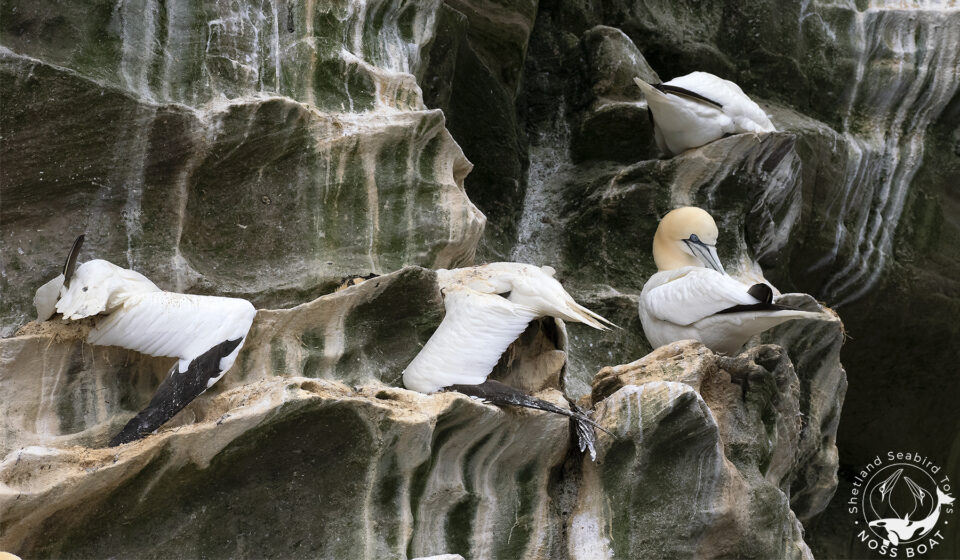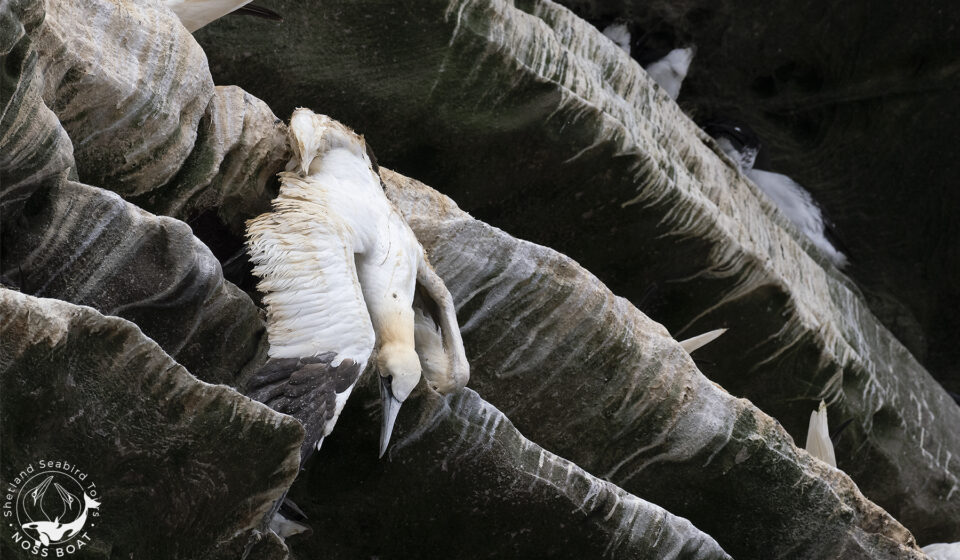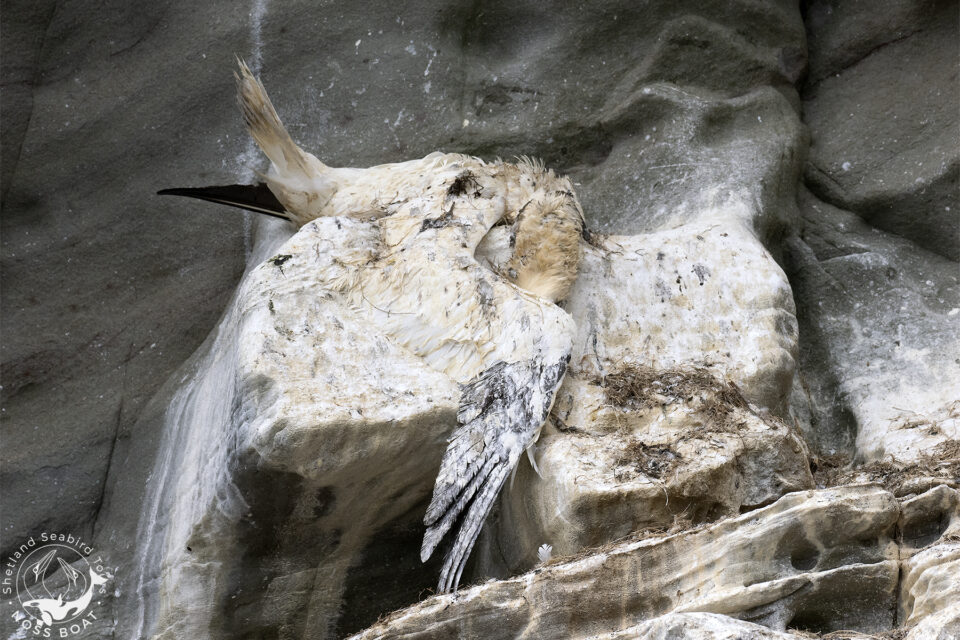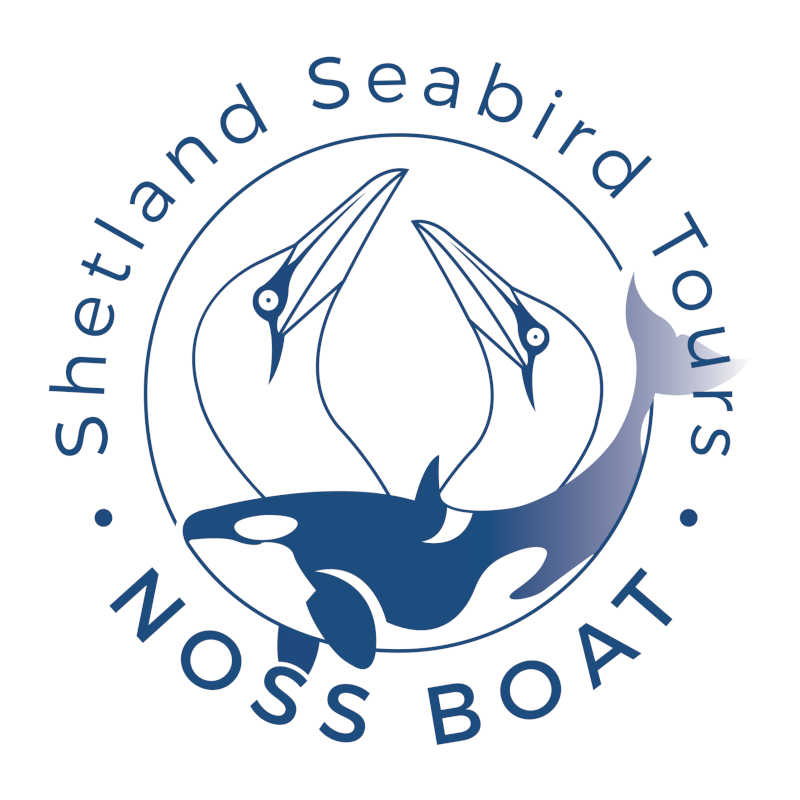Many of you will have become aware of the devastating impact that Avian Flu is having on wild birds, in particular seabirds now, as well as the poultry industry, this spring. Here on Shetland, the disease is spreading most notably among the Northern Gannet & Great Skua populations on the Islands. We have witnessed at first hand the devastating consequences of this disease working through the Noss NNR gannet colony, as this site is a daily fixture on our Noss Boat wildlife tours. Home to over 25,000 northern gannets & thousands of other seabirds during the summer months, Noss cliffs by boat, is hailed as one of Europe’s finest wildlife spectacles, & one we have had pleasure in sharing with thousands of passengers over the years and continue to do so. There are many threats facing our seabirds, many of the current issues are shared as part of our daily live commentary as well as touching on the state & future of the health of the wider marine environment. But to see this new disease at work, killing hundreds of what has been one of our most resilient, successful seabirds, the northern gannet, is very upsetting for all to witness & with no obvious help or solution at hand, we watch with a strong sense of helplessness. All we can do for now is to monitor & hope that this disease will depart as quickly as it arrived, only time will tell. We have liaised & collected samples for NatureScot to initially confirm the disease among Noss gannets, we will continue to offer support where we can.
Hermaness NNR on Unst, also home to a similar number of northern gannets is equally affected, as are apparently, smaller gannet colonies on Foula & Fair Isle. Scotland holds over 40% of the world’s total population of northern gannets, around 180,000 pairs over 14 colonies. Not all colonies have confirmed cases of avian flu at the current time. Icelandic populations have recently confirmed avian flu within their breeding populations, meaning the majority of the endemic northern gannet populations in Europe are now at serious risk of significant losses after years of slow but steady growth.
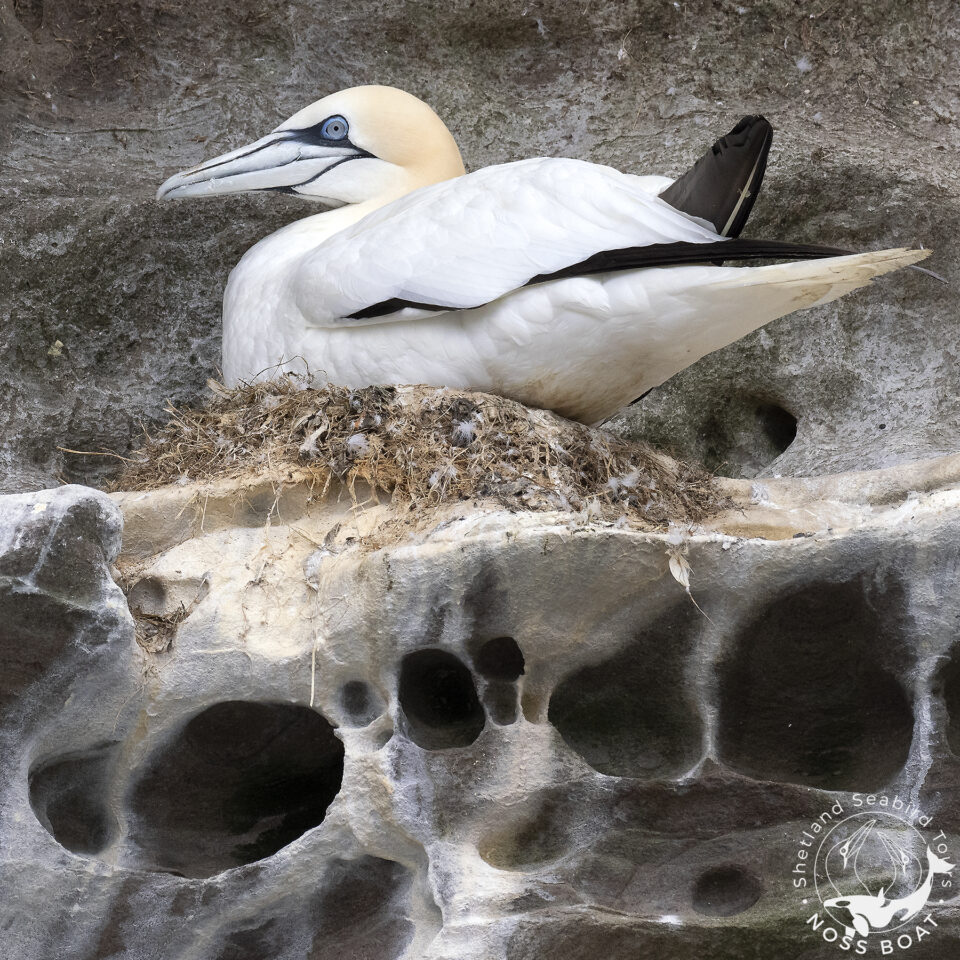
RSPB LATEST STATEMENT:
“The 2021/22 outbreak of HPAI is still affecting wild bird populations in the UK. This has been the worst ever outbreak of HPAI in the UK and has not only affected a large number of birds but is ongoing over a long time period. You can see previous blogs for more information and the story of the unprecedented impact this strain of HPAI has had, causing the loss of a third of the Solway barnacle geese population. We have been in unchartered territory with the disease this year and its effects on wild birds. This is continuing with the focus now being on seabirds in Scotland.
Late last summer, sick and dead great skuas were found in Shetland, Orkney, St Kilda and the Flannan Isles and they tested positive for HPAI. This happened just prior to migration – the species winters off North and West Africa – so the scale of impact on the population was unclear. Now the skuas are back and RSPB Scotland is collating data from colonies to assess impacts, but we were not expected to find great skuas again sick and dying from HPAI. We are also seeing eider ducks and other seabirds including gannets succumbing to HPAI.
Britain’s seabird populations are of global significance with the UK holding 56% of the worlds northern gannet population and Scotland holding 46% of the world’s northern gannets and 60% of the world’s great skuas. Both these species are amber listed in Birds of Conservation Concern 5. Our seabirds are already under massive pressure from human impacts including climate change, lack of prey fish, deaths through entanglement in fishing gear and development pressure. There is great concern for the potential impacts of HPAI on our already beleaguered wild birds.
The RSPB believes that to deal with future HPAI outbreaks in wild birds, improved surveillance, testing and carcass collecting is essential and that an effective plan should be put in place for biosecurity measures and disturbance minimisation to alleviate the pressures on these birds. But this is only the surface of the problem, we must take actions towards effective conservation of our wild bird species“. – Nick Hawkes June 1st 2022
Scotland: https://www.gov.scot/publications/avian-influenza-bird-flu/
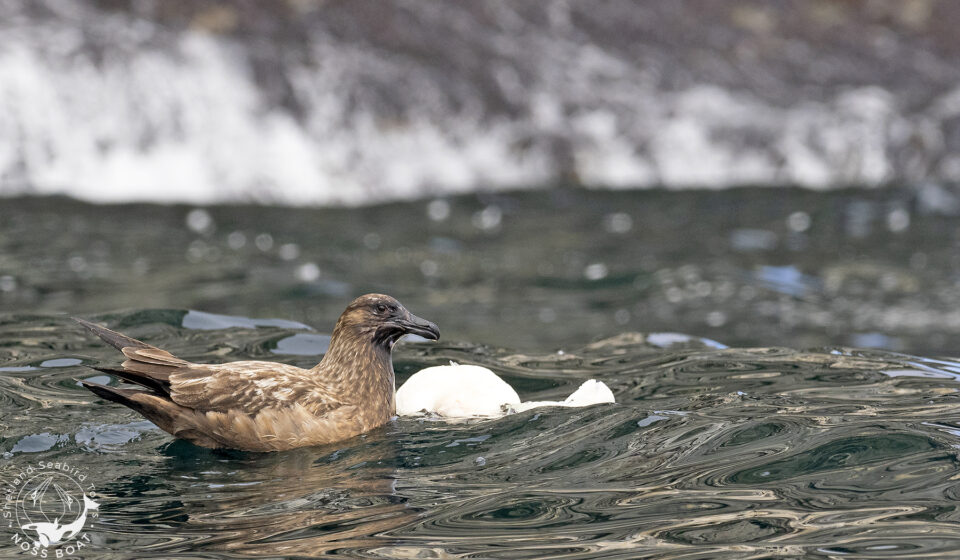
“Birds can be infected with the avian influenza virus through contact with infected individual birds or waste products. Wild birds including waterfowl can carry and transmit the virus without showing evidence of disease. Movements of poultry around and between countries, and the migrations of wild birds, are both known vectors of the virus.
Although the risk of contracting the disease from a wild bird is very low, we recommend that people do not handle sick or dead wild birds, remain vigilant, and report dead wild waterfowl (swans, geese or ducks), seabirds or birds of prey to the DEFRA helpline (03459 33 55 77). See DEFRA’s website here for more details” – Nick Hawkes June 2022
https://www.gov.uk/guidance/avian-influenza-bird-flu
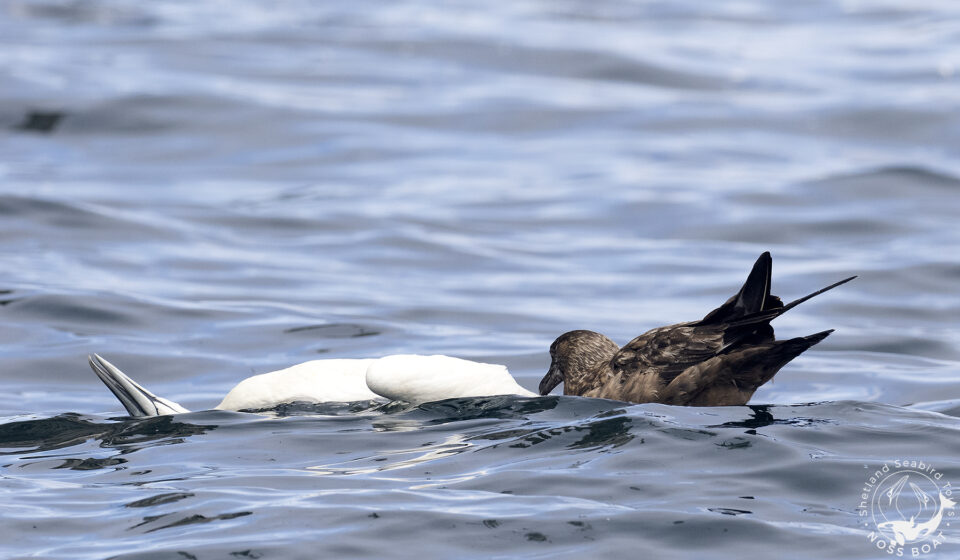
Great Skuas or “bonxies” as they are known in Shetland, one of our most iconic seabirds, were first confirmed with avian flu last year & this year has seen a frightening development in the numbers of affected birds & mortality levels across Shetland this year. Shetland & Orkney hold over 60% of the world population of Great Skua, and 90% of the UK breeding population. They have a very restricted breeding range confined to the northeast Atlantic and migrated to spend the winter in north-west Africa. We have seen many dead bonxies in the water around Noss as well as alive birds clearly showing signs of the disease. We have been bonxies feeding on the infected corpses of northern gannets and of course chasing other seabirds for food, all have a high risk of cross-infection between species. There have been devastating scenes of dead & dying bonxies on Noss & Hermaness in recent weeks. Again at this stage, all we can do is to monitor & wait for any new government guidelines or initiatives but it is expected that Bonxies will have a disastrous breeding season this year with high mortality rates & low productivity. What we can do, as the RSPB & NatureScot have stated, is to call for urgent adoption of policies & conservation action to help maximise the resilience of our seabird populations, which are under enormous threats from climate change, bycatch mortality, the impact of non-native predators & disease outbreaks such as avian flu.
